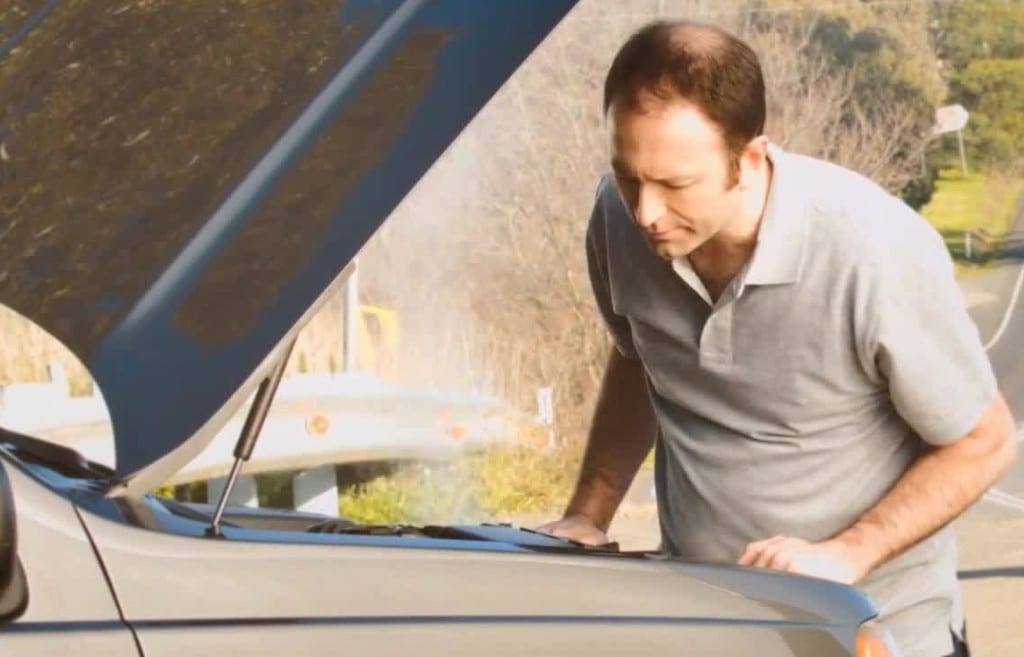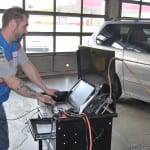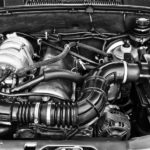For many of us, when our rigs start to rattle, it means an immediate trip to the shop for auto repair estimates. But while it’s good to stay on top of vehicle maintenance, being too quick to see the mechanic can end up costing you extra.
Not only can you wind up paying for fixes you could have handled yourself, but some repair shops will also manage to find several other expensive things to replace whether your car really needs it or not.
Becoming better acquainted with some of the vehicle problems you can remedy yourself is a smart way to save money. Plus it always feels good to be self-sufficient when it comes to caring for your car.
And even if you figure out that a problem requires the skills of an expert, at least you’ll have a better idea of what the problem is and how much it should cost to take care of it.
Here’s the low down on a number of ways you can diagnose vehicle issues on your own.
Warning Lights
The warning lights that pop up on your dash are linked to your car’s computer, and they alert you when something isn’t right with your vehicle.
Unfortunately they tend to offer little information beyond telling you: “Uh oh.” For instance, the “Check Engine” light gives you a heads up but no details about what the actual problem is.
That’s why it’s handy to pick up your own Onboard Diagnostics Reader. It’s the same tool that mechanics use to link up to your car’s computer and access more information.
When you want to use the reader, just plug it in beneath the dash. Higher end readers will give you more specific information while cheaper ones will provide a code that you have to translate.
Once you know what’s happening under the hood, you can decide whether or not it’s a repair you want to handle yourself.
Smoke from Under the Hood
Seeing white billows of smoke rising from the front of your car can be cause for instant panic. But it doesn’t necessarily mean that it’s time to freak out.
If you’ve had a recent oil change, it could be as simple as the oil cap being accidentally left off. Another likely scenario is that the radiator hose has cracked and needs to be swapped out.
When lots of white smoke starts pouring out while you’re driving, it can also indicate that the engine is overheating. When’s the last time you checked your coolant?
The best way to prevent that kind of issue from happening is to make sure you stay on top of routine maintenance and pay attention to your car’s fluid levels.
Exhaust Smoke
Paying attention to what’s coming out of your exhaust is another good way to catch car problems before they become exacerbated.
White smoke coming from your tailpipe can let you know that coolant is leaking before you get into a situation that involves the engine overheating.
Blue smoke means that oil is escaping from the paths it’s supposed to travel to the engine and leaking in with the fuel. When the oil and gas burn together, you get blue smoke.
Check to see if your car has been consuming exorbitant amounts of oil, and have your engine looked at right away to determine where the oil is leaking from.
If you see black smoke coming from the exhaust, it means that you are burning too much fuel. It’s usually a quick problem to diagnose and fix, but you should take care of it right away so you don’t end up wasting lots of gas.
Check your air filter first as it may be the culprit. Other components like sensors or fuel injectors could be the ones malfunctioning as well.
Whatever the color, unusual exhaust smoke is a sign that your car is in distress, so heed its warning and figure out what’s going on to ensure that your vehicle remains road-worthy for as long as possible.
Weird Noises
Every car has its quirks. Some are just things you learn to love, and others are an indication that trouble is afoot. If your vehicle starts to make funny noises, there are some go-to fixes that can put the cacophony to rest.
If the engine sounds like it’s whining when you’re steering, it’s likely that your car is in need of some powersteering fluid. And along the same lines, if your brake pedal goes to the floor, you probably need brake fluid.
However, if your engine is making other funky noises, such as knocking or rattling, that’s a sign that it needs immediate attention. You should pull over and call for assistance to avoid doing any further damage.
Now some noises are more pervasive. Screeching when you hit the gas could mean you need a new fan belt, and screeching when you apply the brakes means your pads are worn down and need to be replaced.
Clicking is also a fairly common sound for your car to make, and there are several possible causes based on where the sound is coming from.
If one of your tires is clicking, check to see if the hubcap is loose and inspect the tread to see if anything is stuck in the rubber. A rock or another piece of debris you picked up could be to blame.
And last but not least, if you hear a hissing sound, it’s likely that a hose is leaking. Make sure that you don’t go poking around while everything under the hood is still really hot, but when it’s safe, look for evidence of leakage or hose damage.
Knowing your noises can save you a lot of time and hassle. And if your car just needs some fluid, you can also spare yourself the expense of paying for a visit to the mechanic.
Puddles of Fluid
That wet spot on the pavement that’s coming from your car is usually just water from the air conditioning. But you should note any suspicious puddles and investigate to make sure that they’re only comprised of water.
If the liquid is clear but slick, it might be brake fluid. And if it has the strong scent of gasoline, then you know you’re leaking fuel.
Liquid that’s see-through and a red or green color is coolant. A darker red is transmission fluid. And brown or black is most likely oil.
Being able to identify the leak can help you scout out the right area when you’re trying to track down the problem. It’s also helpful if you’re trying to communicate the issue to a repair person.
Taking Advantage of the Internet
If you’re having trouble diagnosing an issue with your car, you can also consult the world wide web. Sites like AutoMD.com are designed to help you figure out what the deal is with your ailing vehicle.
You can also find instructions for Do-It-Yourself fixes on Youtube and a variety of “How To” sites. There are plenty of quick fixes you can do yourself to save some cash.
Just be sure to leave the serious stuff to the mechanics if you don’t have a lot of experience. There are definitely some repairs that are worth paying for.
However, do ask your mechanic to talk to you before doing any repairs and talk through proposed fixes carefully to determine if they’re truly necessary.






